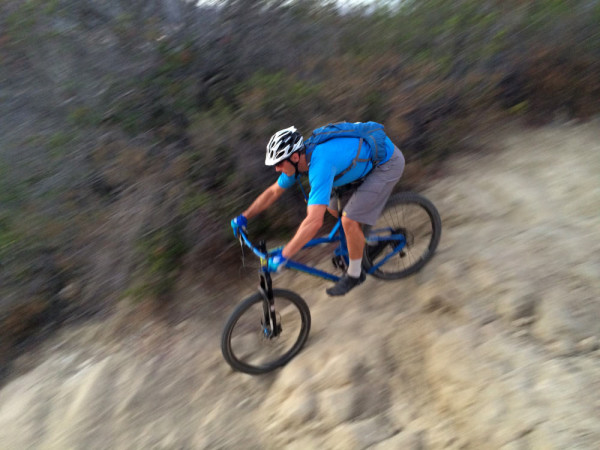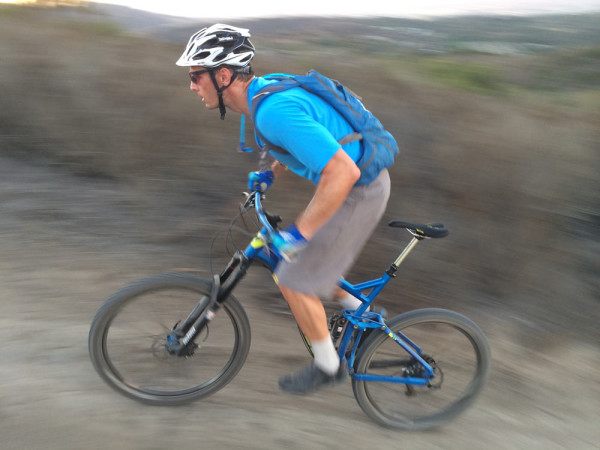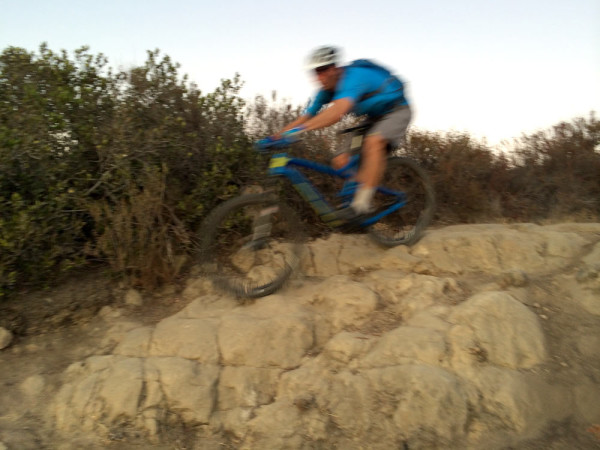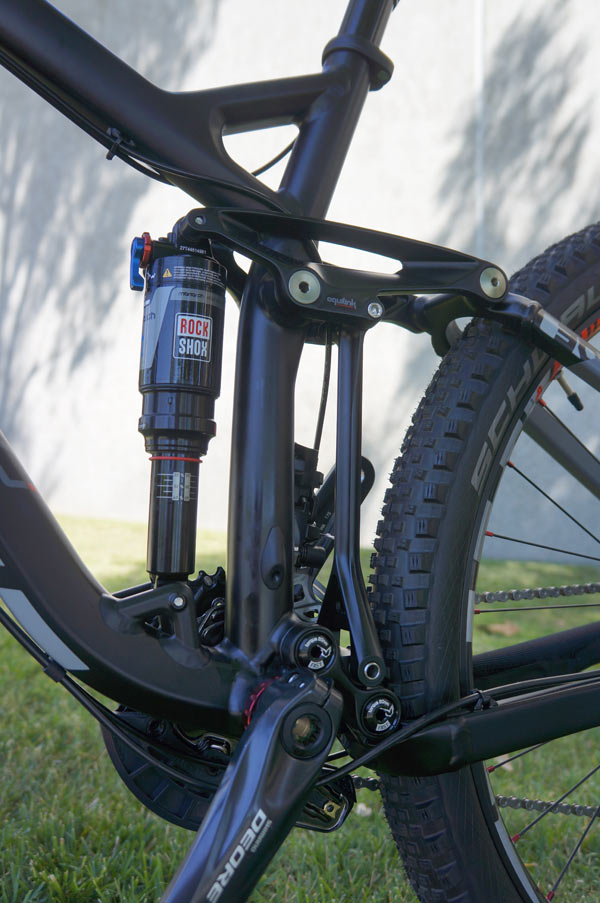Following Felt’s 2015 bike introduction, where we saw the new goodies for road, triathlon, cyclocross, mountain and e-bikes, they offered the chance to go ride. Curiously, I was the only one to take them up on it (right?!?), so designer Scott Sharples and I headed for the hills.
While he was riding a modified long travel 29er prototype that may or may not ever see the light of day now that everyone’s giddy for 650B, I sized up the new Compulsion 160mm travel trail bike.
Introduced at Sea Otter earlier this year, the 2015 Compulsion line switched from 26″ wheels to 27.5″ and slackened the frame. By the time you can buy it early next year, it’ll have three build options on the new alloy frame spec’d to hit the dirt hard without breaking the bank. The top end Compulsion 10 (tested) retails for $4,499 with a very respectable Race Face/X01 drivetrain, Rockshox suspension and KS LEV dropper post. From there, two models below come in at $3,299 and $2,699. Hit the MTB link above for full details.
Our 2.5 hour ride had us racing the setting sun back to the car, capping off a lot of climbing and some fast, fun, technical descending. Here’s how the bike performed…
Unless you’re riding parks all the time, you generally have to earn your turns. Fortunately Felt’s Equilink suspension does a remarkable job of putting the power to the ground without a lot of flop or bob. Seated climbing is rock solid, and standing to grind or sprint really doesn’t affect it much. Even under full power up a short pitch, the rear wheel could track the ground without inducing enough suspension movement to detract from performance, particularly if you switch the shock’s compression settings to something other than wide open.
It even handled itself pretty well on the super steep, slow speed stuff. The slack head angle did require a bit more attention to keep it in a straight line, but only on the steepest inclines. If there was a weak link on the long climbs, it was my legs. The bike climbs like a goat.
When it came time, and there were plenty of times, to point it down, it was quite often across or over rocks and drops, into high speed banked turns and through some switchy corners tacking down the mountainside.
The Compulsion’s 160mm of travel and 66º head angle made easy work of the steep stuff. Most of my attention on the descents was making sure the front end went where I pointed it (made easier thanks to a fairly stiff, hydroformed front triangle), so it took a little post ride inspection of the photo sequences to notice just how well the rear end absorbed the hits and tracked the ground. Even quick runs on stepped rocks like these showed very little time with the rear wheel off the ground. It could be flicked around, and the smaller-than-29er wheels are certainly playful, but when I wasn’t trying to pop it up, the rear wheel stayed pretty well glued to the ground.
Some (a lot) of that has to do with the shock, of course. But the suspension design has much to say about how well the shock can do its job, so it’s worth a short discussion of the Equilink:
The Equilink is the wishbone connecting the lower linkage to the upper rocker arm. By connecting the two with a piece that can rise and fall freely thanks to pivots at both ends, it allows Felt’s engineers a lot of freedom to tune the path that lower linkage takes. The result is a finely tuned rear axle path. On their shorter travel Equilink bikes, which are mostly 29ers at this point, they don’t even use a pivot at the rear axle, relying on seatstay flex to build in a bit of anti-squat. Here, though, there is a rearward pivot since a) it’s an alloy frame that won’t flex as readily as carbon and b) there’s a 160mm of travel. I can’t say anything about the durability of the system, but I can say it works.
Following a big day of presentations and photos and everything else it takes to get all these words and pictures on the site, the Compulsion made for a great ride. There was minimal learning curve, just a bit of tweaking the suspension and tire pressure to get it feeling right. The geometry felt dialed for a bike aimed at the enduro and aggressive trail rider crowd. It’s something that’d feel right at home in Park City’s mecca of mountain biking or some gnarly east coast root and rock gardens like Beech Mountain or Pisgah. Definitely worth a test ride.
Big thanks to Scott for leading me around the trails and the post ride burritos!



